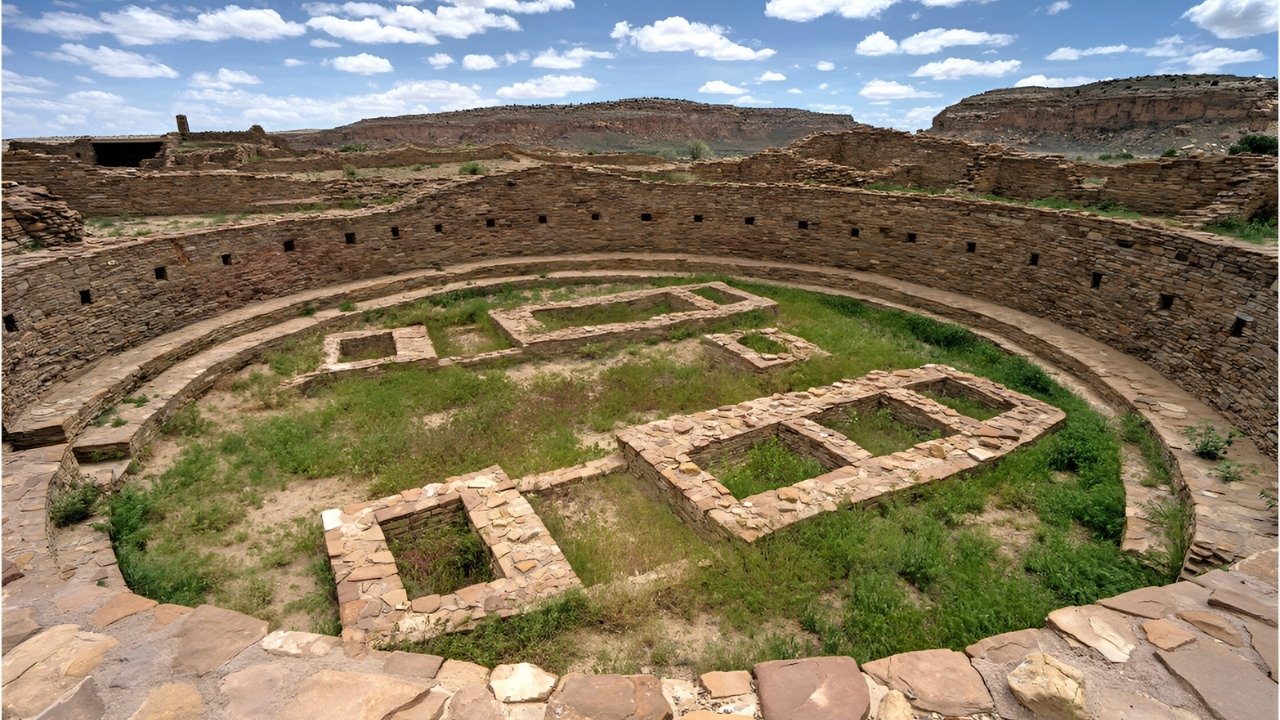Secrets Of New Mexico’s Chaco Canyon Ruins

Have you ever wondered what ancient secrets lie within New Mexico's Chaco Canyon Ruins? This incredible site, once a bustling center of Puebloan culture, offers a glimpse into a civilization that thrived over a thousand years ago. Massive stone structures, intricate road systems, and mysterious petroglyphs tell stories of a sophisticated society. Walking through these ruins, you can almost hear the echoes of ancient rituals and bustling markets. Whether you're a history buff or just love exploring, Chaco Canyon promises an unforgettable adventure. Ready to step back in time and uncover the mysteries of this ancient world? Let's dive in!
Ancient Mysteries of Chaco Canyon
Chaco Canyon, located in northwestern New Mexico, holds some of the most fascinating ruins in the United States. This UNESCO World Heritage Site offers a glimpse into the lives of the ancient Puebloans who thrived here over a thousand years ago. Let's explore some of the most intriguing spots within this historic canyon.
Pueblo Bonito
Pueblo Bonito stands as the largest and most famous ruin in Chaco Canyon. This massive structure once housed hundreds of people and served as a central hub for the Chacoan culture.
- Great Kiva: A large, circular ceremonial room used for religious and social gatherings.
- Terraced Rooms: Multi-storied rooms that showcase advanced architectural skills.
- Petroglyphs: Ancient rock carvings that tell stories of the past.
Chetro Ketl
Chetro Ketl, another significant site, is known for its unique architectural features and large plazas. This ruin provides insight into the communal life of the Chacoans.
- Great House: A massive building with over 500 rooms.
- Elevated Kivas: Raised ceremonial rooms that are unique to this site.
- Plaza: A large open area used for gatherings and ceremonies.
Casa Rinconada
Casa Rinconada is famous for its enormous kiva, one of the largest in the Southwest. This site offers a deeper understanding of the spiritual life of the Chacoans.
- Great Kiva: A massive ceremonial room that could hold hundreds of people.
- Astronomical Alignments: Features that align with celestial events, indicating advanced astronomical knowledge.
- Subterranean Passages: Underground tunnels connecting different parts of the site.
Pueblo del Arroyo
Pueblo del Arroyo, located near the Chaco Wash, provides a different perspective on Chacoan architecture and community life.
- Tri-wall Structure: A unique building with three concentric walls.
- Storage Rooms: Areas used for storing food and supplies.
- Water Management Systems: Ingenious methods for collecting and distributing water.
Hungo Pavi
Hungo Pavi, though less visited, offers a quieter experience and a chance to see well-preserved ruins without the crowds.
- Great House: A large building with over 150 rooms.
- Kivas: Smaller ceremonial rooms scattered throughout the site.
- Petroglyphs: Rock carvings depicting animals, people, and symbols.
Kin Kletso
Kin Kletso, meaning "Yellow House" in Navajo, is a smaller but equally fascinating site. It provides a glimpse into the daily life of the Chacoans.
- Rectangular Rooms: Unusual room shapes compared to other Chacoan sites.
- Masonry Walls: Well-preserved walls showcasing advanced construction techniques.
- Nearby Trails: Paths leading to other ruins and scenic viewpoints.
Wijiji
Wijiji, one of the more remote sites, offers a peaceful and reflective experience. Its simplicity contrasts with the grandeur of other ruins.
- Small Great House: A compact building with about 100 rooms.
- Petroglyphs: Intricate carvings that provide clues about the Chacoan way of life.
- Scenic Views: Stunning vistas of the surrounding canyon and landscape.
The Timeless Allure of Chaco Canyon
Chaco Canyon's ruins offer a glimpse into a civilization that thrived in the harsh desert. The intricate architecture, petroglyphs, and kivas tell stories of a people deeply connected to their environment and each other. Visiting this site isn't just about seeing ancient structures; it's about feeling the history and mystery that still lingers. Whether you're an archaeology enthusiast, a history buff, or just someone who loves exploring, Chaco Canyon has something to offer. The remote location adds to its charm, making the journey there part of the adventure. Remember to respect the site and its significance to the Native American tribes who consider it sacred. Chaco Canyon isn't just a destination; it's a journey back in time, offering lessons and insights that are still relevant today.

